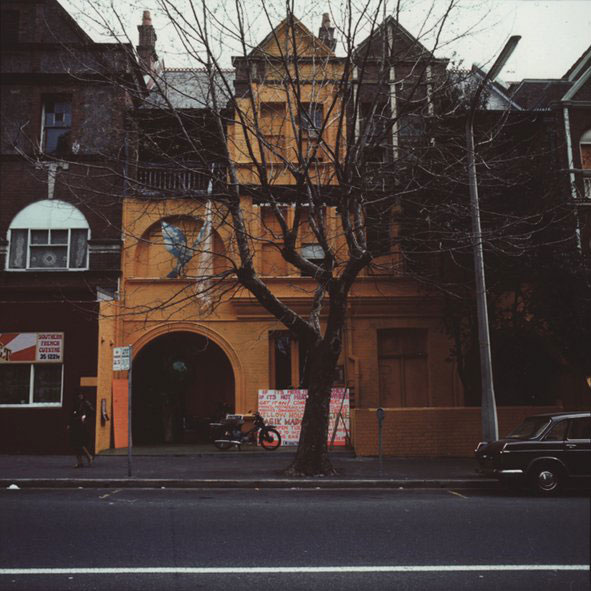All The Best – Meeting Martin Sharp – a trip through Aus art history
March 18th 2011
Nick La Rosa

Canvasses stacked fifteen deep. Shelves overflowing with books, discs, folders. Crusty tubes of paint. Surfaces on surfaces of newspaper cuttings, torn out exhibition reviews, invites, catalogues. A ruffled day bed in a dark corner.
This is the living art museum that is the house and studio of revered Australian pop artist Martin Sharp. He’s the kind of artist who, even if you haven’t heard of him, you know his work and see his influences everywhere. We’re all familiar with his 1970s renovation of Luna Park’s gigantic laughing face, and his psychedelic pop art-flavoured designs adorn the covers of CDs that are probably lurking around the back of your parent’s CD collection, like Cream’s “Disraeli Gears”.
I spent a couple of hours at Martin's sprawling eastern suburbs mansion recently. The assignment was to talk to Martin about his experiences of his 1970s bohemian art collective and art space, the Yellow House, a 24/7 live-in multi-media art, theatre and performance space which busted the conventions of a traditional gallery to become a hallmark of Australian art history. For the most part of the interview, we sat at a huge timber table piled high with art-related
debris, while Martin retrieved decades-old memories for me. He speaks slowly and thoughtfully, his anecdotes weaving around, trailing off and casually coughing up such icons as Ravi Shankar, who once visited the Yellow House. The conversation swerves from his formative years under artist and teacher Justin O’Brien, the influence of Van Gogh’s writing and Magritte’s paintings on his own work, his memories of Brett Whiteley’s funeral and his musings on the counter culture of the 1970s that gave birth to the Yellow House collective. Throughout our chat, he smokes incessantly, flaunting a child-like black and red texta illustration (by some well meaning family member?) pinned on the wall behind him which screams, “Don’t smoke”.
Even just visiting the studio was a trip through time into Sydney’s art world. “It’s really another incarnation of the Yellow House,” Martin says.
On one easel sits a huge work which has been in progress since 1972. Beside this is “Abalone”, a painting which Martin says is partly a tribute to Brett Whiteley, also a Yellow House alumnus, whose work is in another corner of the room. The chaos is just an illusion however – Martin knows exactly in which pile lies a beloved Tiny Tim CD, or a disc of photographs documenting the Yellow House.
Needless to say, I was reluctant to leave this trove of art treasures for the real world.
The interview with Martin, part of All The Best’s “Colour” show, can be downloaded here.


